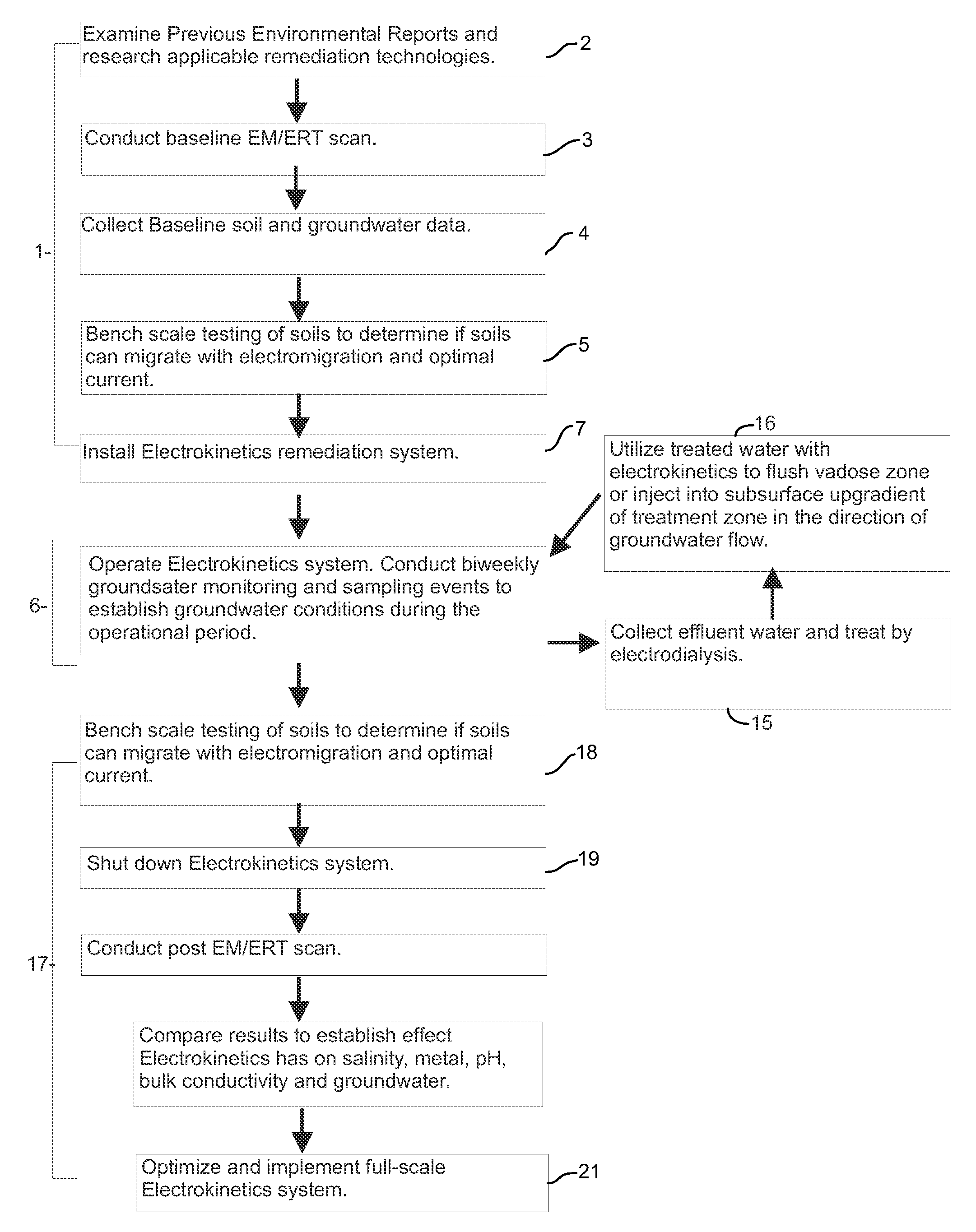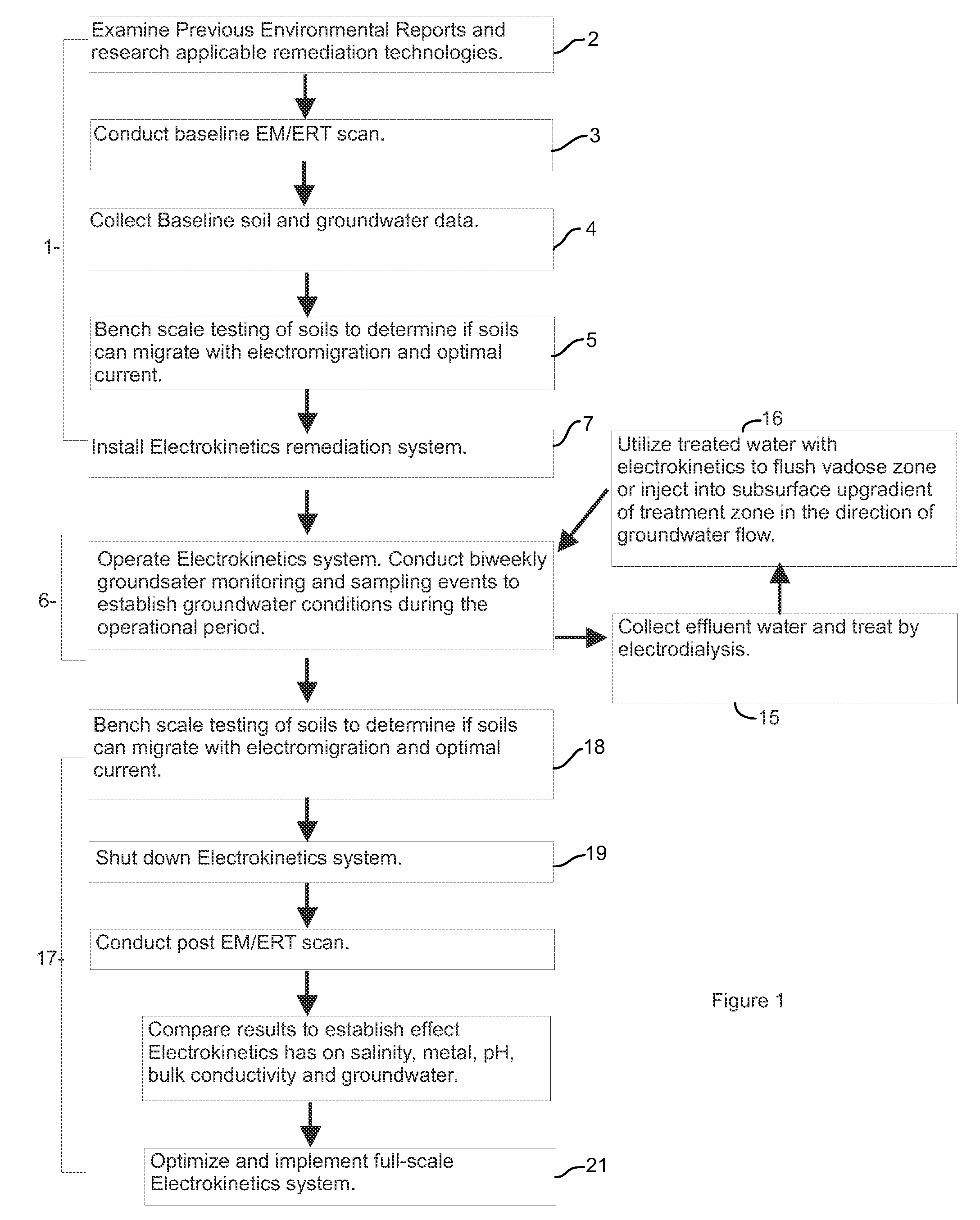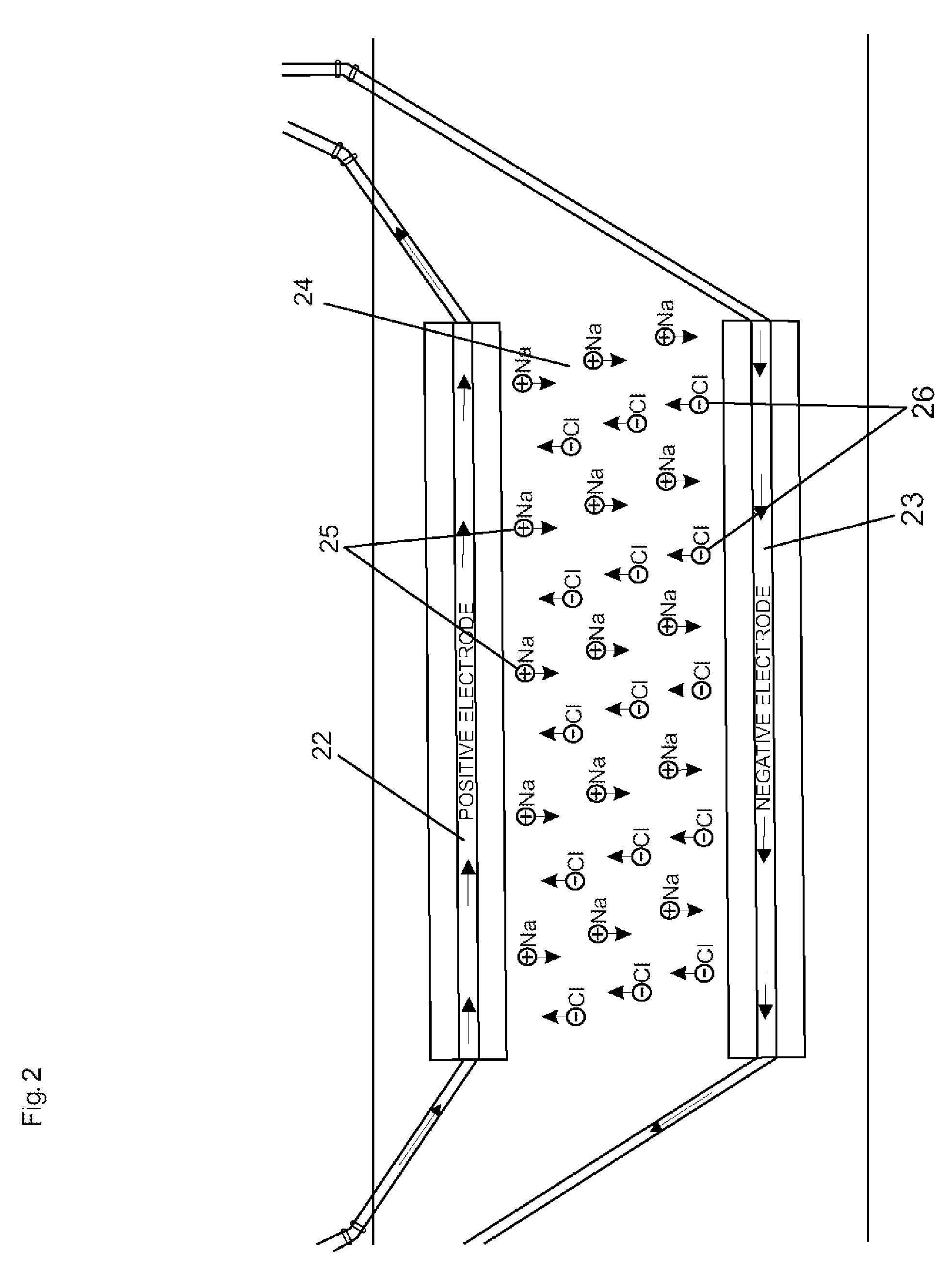Assessment and remediation process for contaminated sites
a technology of assessment and remediation process, applied in the direction of contaminated soil reclamation, etc., to achieve the effect of optimizing remediation
- Summary
- Abstract
- Description
- Claims
- Application Information
AI Technical Summary
Benefits of technology
Problems solved by technology
Method used
Image
Examples
example
Research and Initiation
[0053]Preliminary research on electro-kinetic remediation and impacts on soil was carried out,
[0054]A contaminated site was selected for study. Previous environmental reports written on the selected site were reviewed.
Pre-EM / ERT Scan
[0055]Baseline EM / ERT scans were conducted prior to conducting the remediation.
Baseline Soil Assessment and Groundwater Well Installations
Base-Line Soil Sampling:
[0056]Utility locates were performed prior to conducting any ground disturbance.
[0057]Soil samples were collected at well installation points and at other sampling locations which did not have wells installed within them. A total of 12 boreholes were advanced, 5 of which had monitoring wells installed within them, Boreholes were advanced either 0.5 (3 sampling locations), 0.8 (2 sampling locations), 1.8 (3 sampling locations), 2.8 or 6.3 m away from the electrodes to provide a representation of the effect of the electrode at varying distances from the electrodes.
[0058]GPS ...
PUM
 Login to View More
Login to View More Abstract
Description
Claims
Application Information
 Login to View More
Login to View More - R&D
- Intellectual Property
- Life Sciences
- Materials
- Tech Scout
- Unparalleled Data Quality
- Higher Quality Content
- 60% Fewer Hallucinations
Browse by: Latest US Patents, China's latest patents, Technical Efficacy Thesaurus, Application Domain, Technology Topic, Popular Technical Reports.
© 2025 PatSnap. All rights reserved.Legal|Privacy policy|Modern Slavery Act Transparency Statement|Sitemap|About US| Contact US: help@patsnap.com



